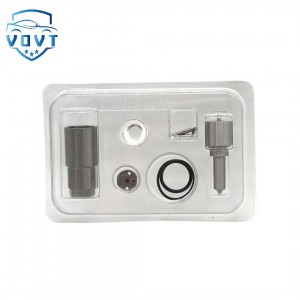Abstract
The increasing adoption of biodiesel as a renewable and low-carbon alternative to petroleum-based diesel introduces new challenges for fuel injection system components, particularly the injector nozzle, which operates under extreme pressure, temperature, and flow conditions. This study investigates the compatibility of biodiesel with common nozzle materials and examines the resulting effects on atomization performance. Due to its higher polarity, oxygen content, and potential for oxidation, biodiesel interacts with metallic and coated surfaces in ways that differ significantly from conventional diesel fuels.
Material-compatibility experiments reveal that biodiesel accelerates certain chemical and physical degradation mechanisms in injector nozzle components. Stainless steels and tool steels commonly used in nozzle manufacturing exhibit increased susceptibility to corrosion fatigue and chemical etching when exposed to oxidized biodiesel, especially at elevated temperatures. Surface coatings such as DLC, chromium-based layers, and ceramic nano-coatings show varying resistance to biodiesel-induced softening or delamination. Microstructural analysis indicates that prolonged biodiesel exposure can affect surface hardness, passivation stability, and micro-pitting behavior, potentially altering the sealing capability between the needle and seat.
In parallel, nozzle atomization characteristics under biodiesel fueling are analyzed using high-speed imaging and laser diagnostic techniques. Compared with fossil diesel, biodiesel’s higher viscosity and surface tension reduce spray penetration speed, modify droplet breakup modes, and increase the average Sauter mean diameter (SMD). These changes can weaken air–fuel mixing efficiency, delay ignition timing, and affect combustion completeness. However, the oxygen content in biodiesel can partially compensate for the larger droplet size by improving local oxidation rates once ignition occurs.
A combined CFD–experimental approach is adopted to correlate material changes with spray behavior. Surface degradation on the nozzle orifice, including micro-pitting and edge rounding, significantly alters the nozzle’s internal flow field, promoting cavitation instability and increasing spray dispersion variability. Results show that even minor biodiesel-induced wear can lead to noticeable drift in injection quantity and atomization uniformity over long-term operation.
Based on these findings, several enhancement strategies are proposed. Material selection should prioritize alloys with improved corrosion resistance and coatings with strong chemical inertness toward fatty acid methyl esters (FAME). Fuel stabilization additives, strict control of biodiesel oxidation levels, and optimized thermal management of the injector can further mitigate material degradation. Additionally, nozzle geometry refinement and adaptive injection strategies can compensate for viscosity-related atomization challenges.
This research provides an integrated understanding of how biodiesel affects injector nozzle durability and spray quality, offering guidance for future injector design and for improving the long-term reliability of biodiesel-fueled engines.



















